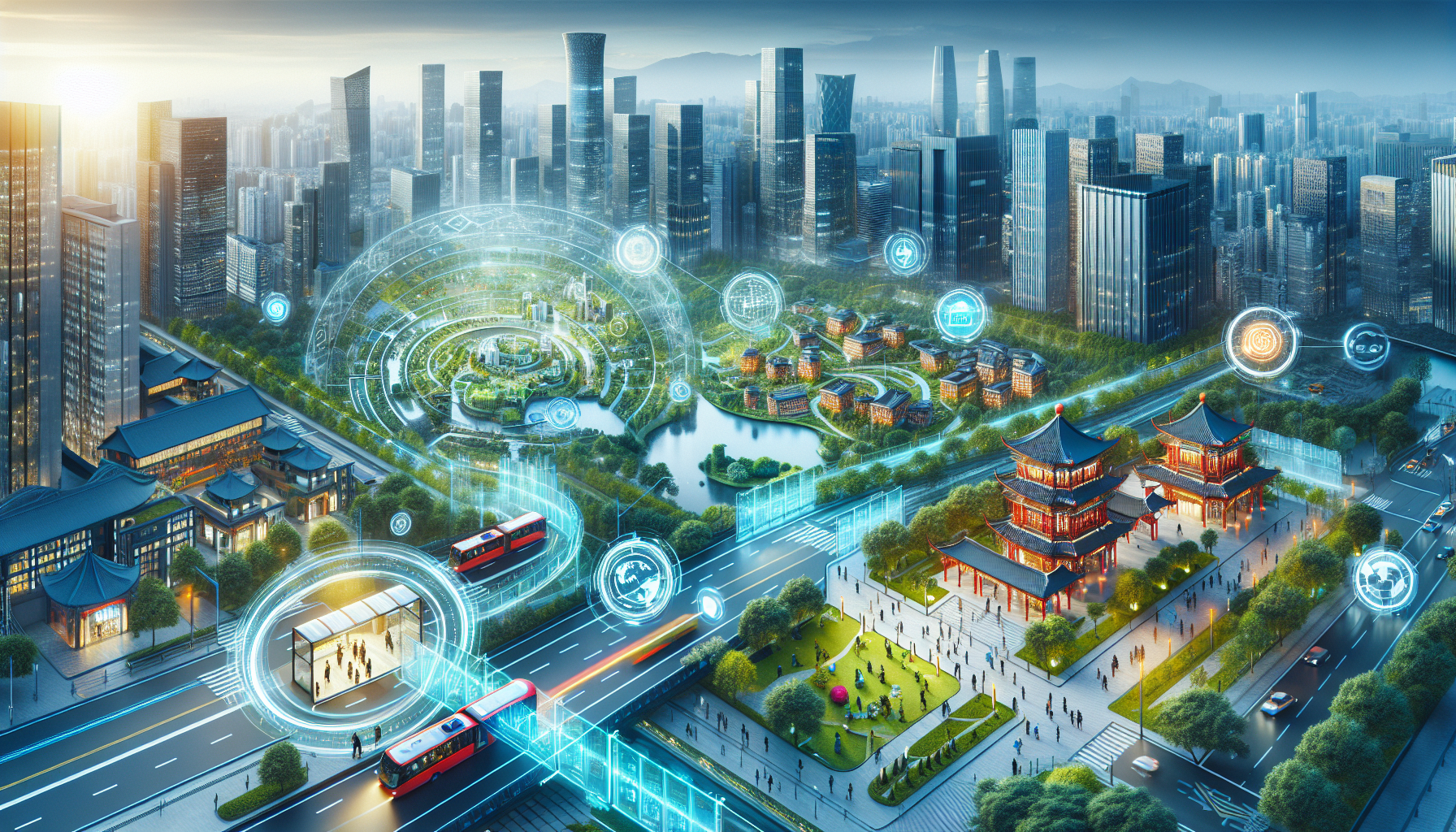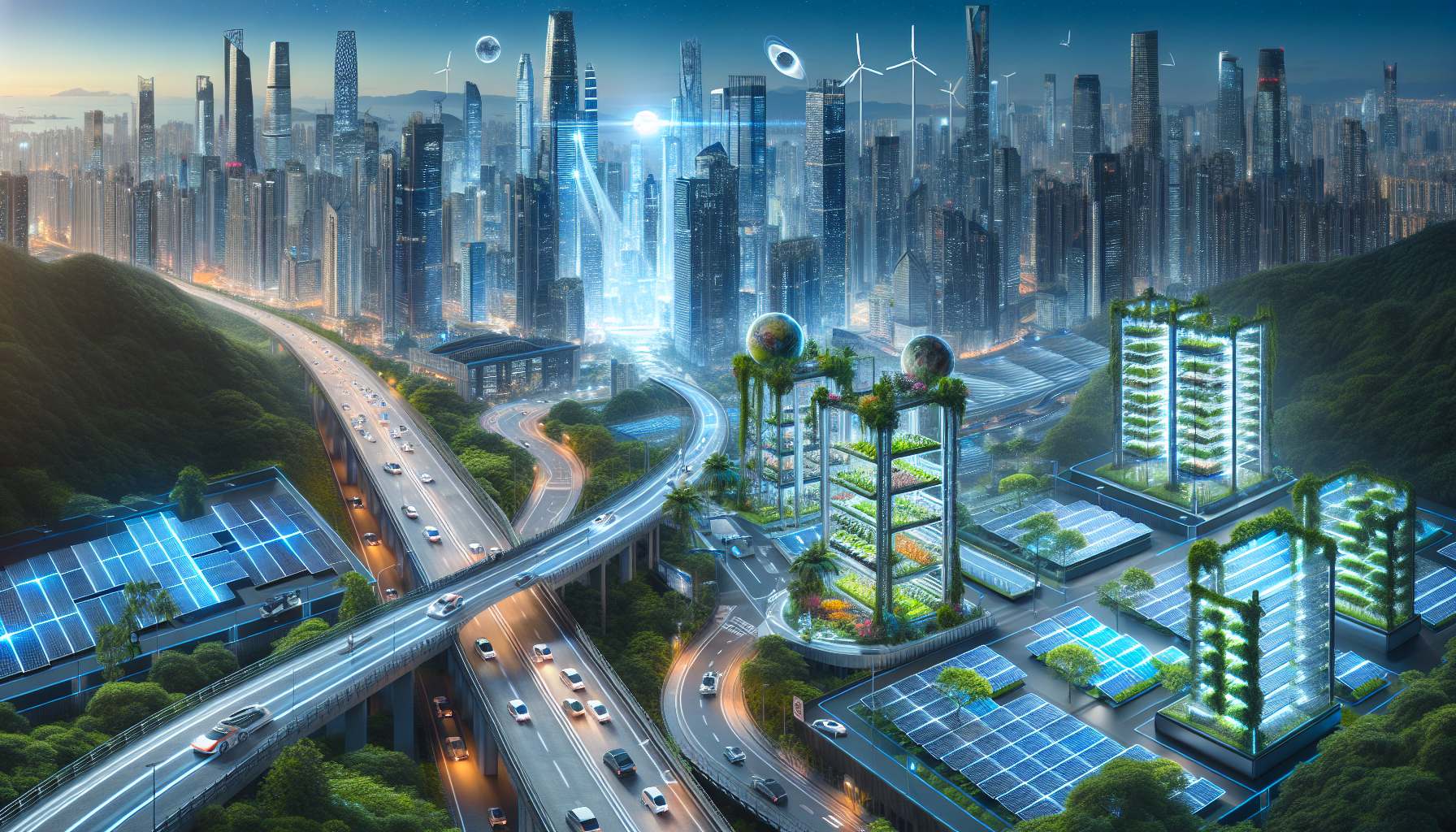Advertisements
Discover how smart cities in China are revolutionizing the way people live, work, and interact with their surroundings. By connecting cutting-edge technology with China’s rich culture, these cities are paving the way for a more sustainable and efficient future.
With the implementation of innovative solutions such as the use of artificial intelligence, the Internet of Things and renewable energy, smart cities in China are becoming a global benchmark in urban planning and sustainable development. These technologies are being applied in a variety of sectors, from transportation and energy to health and security.
Furthermore, the integration of Chinese culture into this process of urban modernization brings a unique and enriching aspect to urban development. The appreciation of local traditions and values, combined with technological innovation, creates a harmonious and balanced environment for citizens.
Advertisements
In this article, we’ll explore how China is leading the way in smart city development and how this innovative approach is positively impacting people’s quality of life. Stay tuned to find out how the combination of technology and culture could transform the future of cities around the world.
Get ready to dive into the fascinating world of smart cities in China, where tradition meets modernity to create an innovative and sustainable urban environment. Learn about the initiatives underway, the challenges faced and the results achieved so far. Join us on this journey towards a more connected and conscious future.
Smart Cities in China: Connecting Technology and Culture for a Sustainable Future
Technology and Sustainability
China has been a global leader in implementing smart cities that combine cutting-edge technology with sustainable practices. The integration of information and communication systems, clean energy and efficient transportation has transformed the way Chinese cities operate, contributing to reducing pollutant emissions and improving the quality of life of citizens.
- The use of smart sensors to monitor air quality and solid waste management has been key to improving environmental sustainability in Chinese cities.
- The implementation of efficient public transport systems, such as electric buses and high-speed subways, has contributed to reducing traffic and carbon emissions.
- The promotion of renewable energy sources such as solar and wind power has allowed Chinese cities to reduce their dependence on fossil fuels, contributing to the mitigation of climate change.
Culture and Innovation
In addition to technology, smart cities in China also seek to preserve and promote their rich culture and history. The integration of traditional elements, such as local architecture and cultural practices, with technological innovations has created a unique and harmonious environment for citizens.
Advertisements
- The preservation of green spaces and the promotion of traditional Chinese parks and gardens has contributed to improving the quality of life and well-being of city dwellers.
- The integration of cultural elements, such as traditional festivals and local celebrations, with digital technologies has enabled citizens to connect with their cultural heritage in innovative and interactive ways.
- The appreciation of traditional arts and crafts, combined with creative economy initiatives, has boosted the local economy and strengthened the cultural identity of Chinese cities.

Conclusion
In short, smart cities in China represent a successful union of advanced technology, environmental sustainability and cultural preservation. The integration of information and communication systems, clean energy and efficient transportation has been instrumental in reducing pollutant emissions and improving the quality of life of citizens. In addition, the appreciation of local culture through the preservation of green spaces, promotion of traditional elements and integration of local festivals and celebrations with digital technologies has created a harmonious and unique environment for the inhabitants of Chinese cities. The combination of technological innovation and respect for cultural heritage has not only boosted local economic development, but also strengthened the cultural identity of communities. Therefore, smart cities in China are not only connecting technology and culture for a sustainable future, but are also serving as an inspiring example for other regions around the world. This integrated urban development model will certainly bring long-term benefits to society and the environment.
Continuous investment in research and development (R&D) of new technologies is a key factor in the advancement of smart cities in China, especially when it comes to improving their efficiency and sustainability. Chinese smart cities have distinguished themselves by adopting innovative technological solutions that not only improve the quality of life of citizens, but also help address complex challenges such as rapid urban growth, pollution and resource management. With growing environmental awareness and the need to reduce the ecological footprint of large cities, China is consistently ahead of the curve when it comes to implementing clean and efficient technologies.
One of the main areas of focus is the construction of green and sustainable infrastructure, integrating technologies that promote the smart use of resources, such as renewable energy, efficient public transportation, water collection and reuse, and smart waste management. The use of data-driven systems, such as the Internet of Things (IoT), to monitor and optimize energy consumption in real time has been a highlight. With sensors installed in buildings, streets and urban infrastructure, cities can better manage resources, minimizing waste and maximizing energy efficiency.
Furthermore, artificial intelligence (AI) and big data play a crucial role in managing China’s smart cities. Through large-scale data collection, authorities can analyze traffic patterns, predict transportation needs, improve public safety, and optimize services such as healthcare and education. AI integration is also being used to create smarter urban mobility systems, with the use of autonomous vehicles and next-generation public transportation, making cities more accessible and less congested.
Collaboration between the public and private sectors is a key driver of smart city progress. Private companies, especially those specializing in technology, have invested heavily in R&D, pioneering innovations in areas such as 5G communications networks, renewable energy, and automation technologies. Partnerships with universities and research centers have also been key to ensuring that the development of these technologies is driven by cutting-edge academic research and the latest scientific knowledge.
This collaborative approach is seen in smart city projects such as Shenzhen and Hangzhou, where technology solutions are being implemented on a large scale, but with a focus on sustainable practices. In Shenzhen, for example, electric public transport and the integration of digital payment systems are examples of how technology can help reduce cities’ carbon footprints, as well as foster a smarter and more efficient urban environment. Hangzhou, for its part, has invested heavily in Big Data platforms to efficiently monitor and manage all aspects of the city, from traffic to energy supply.
Another crucial aspect is the adaptation of smart cities to the growing demand for a more sustainable and climate-resilient lifestyle. China has invested in green infrastructure, such as green roofs, vertical gardens and ecological public spaces, to create healthier urban environments and improve air quality and climate in cities. In addition, technology has been used to promote urban agriculture, with solutions that allow food production to be more efficient and sustainable in cities themselves.
The search for innovative solutions to address the urban challenges of the 21st century has been central to China’s agenda, and building smart cities is seen as a crucial means to achieve this goal. By integrating advanced technologies and fostering collaboration between different sectors of society, China is not only creating more efficient cities, but also more inclusive, resilient and sustainable ones. The Chinese smart city model offers valuable lessons for other developing countries, demonstrating that it is possible to achieve urban progress without sacrificing environmental sustainability and community well-being.
This holistic and integrated approach will certainly contribute to building a more resilient and inclusive future for all Chinese citizens, reflecting the country's commitment to sustainable development and the quality of life of its people.




